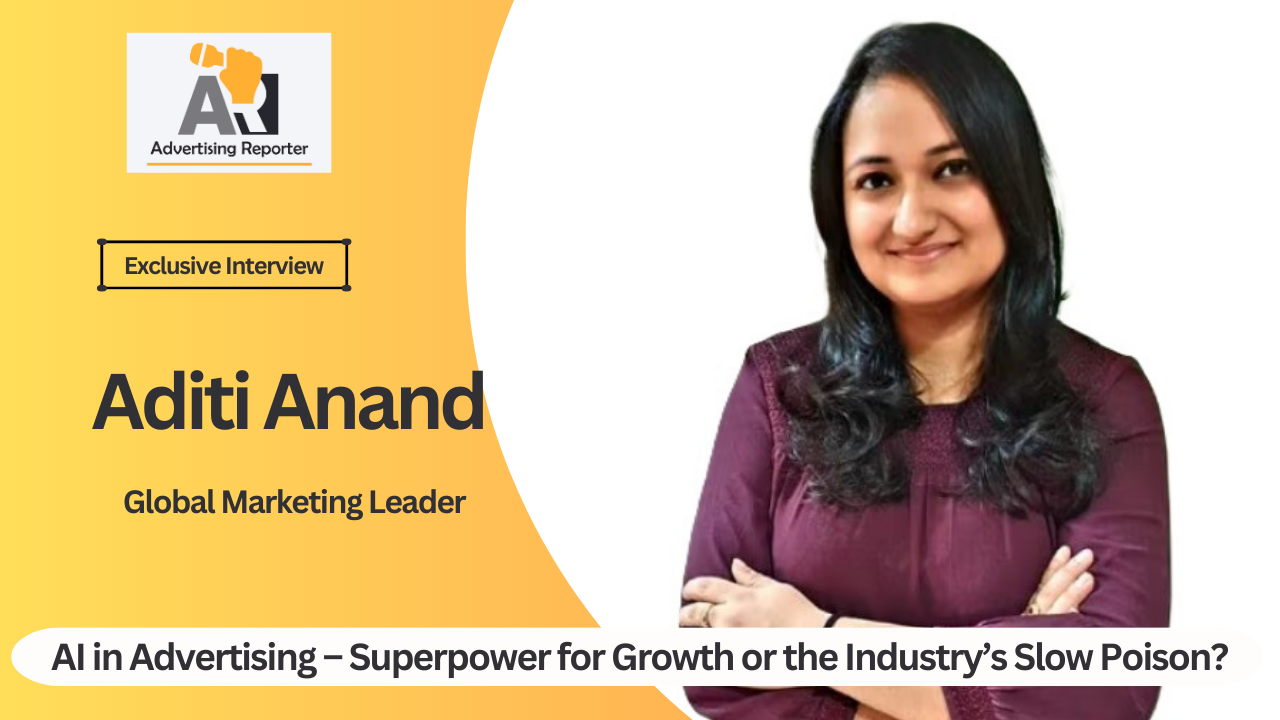1) AI in Advertising – Superpower for Growth or the Industry’s Slow Poison?
I approach AI in advertising with cautious optimism.
Its strengths are undeniable: personalization at scale, rapid execution, and efficiency that can transform campaign delivery. For marketers juggling multiple cohorts, channels, and timelines, it’s a game-changer.
But AI is not yet a big-idea machine. Outsourcing thinking to it can be dangerous. Great brands are built at the intersection of creativity, human connection, and authenticity. AI can mimic these qualities but never truly embody them. It may have artificial intelligence, but it lacks emotional intelligence.
What concerns me most is the risk of a new generation of marketers growing up without understanding the classical brand-building process. That process requires strategic patience, deep consumer immersion, and human-led storytelling that create enduring equity.
AI should be an amplifier, not the origin of ideas. The future belongs to those who can combine human imagination with AI’s speed and scale without losing the soul of the brand.
2) Do you believe AI is also playing a significant role in the recent wave of layoffs within our industry?
Automation tools have been part of marketing for years, streamlining mundane tasks, reducing errors, and increasing speed. AI takes this to another level, enabling execution at a scale and pace we couldn’t imagine before.
Yes, AI is contributing to layoffs, but it’s mostly roles that are execution-heavy rather than thinking-heavy. This is less the end and more of a reset. We’re entering a new normal where AI handles much of the execution, and marketers must skill themselves in higher-order thinking that AI cannot replicate.
For as far as I can see, we’ll still be marketing to fellow humans. That means core responsibilities like writing strategic briefs, big idea thinking, cross-functional alignment, innovation planning, negotiating partnerships, defending budgets, and inspiring teams remain firmly human.
AI can execute and scale, but judgment, context, and emotional intelligence still belong to us. The winners will be those who shift from task-doers to strategic value creators.
3) AI vs. Originality: Is the Future of Advertising Losing Its Human Touch?
Advertising without a human touch rarely lands. Strong brands are built on differentiation, breakthrough ideas, and surprising consumers in unexpected ways. With AI, there’s still a tendency toward a same-same approach: polished execution, but little that truly disrupts without human originality at the core.
Human-centric skills like creativity are the backbone of building strong brands. AI can amplify ideas, accelerate production, and scale personalization, but it cannot feel. It has artificial intelligence, but not emotional intelligence.
I’m yet to see a truly disruptive, original idea emerge from AI without the spark of human thinking. The emotional connection comes from lived experience, empathy, and cultural understanding.
AI should be our amplifier, not our originator. When machines and humans work together, we can share stories at scale, but the fingerprints of creativity need to remain human. That’s what builds brand love.
4) What are the biggest challenges you’ve faced in implementing digital transformation strategies?
The biggest challenge in driving digital transformation has always been a shift in mindset. When digital adoption was minimal, the resistance often came from a belief that “what worked before will keep working.” Overcoming that meant evangelizing the value of digital and showing stakeholders how it could deliver not just efficiency, but entirely new ways of reaching and engaging consumers.
The other big challenge is building robust systems. Fragmented tools, siloed data, and inconsistent processes slow down adoption. Success requires upfront investment in scalable infrastructure, integrating platforms, and training teams to use them effectively.
Digital transformation is not just a technology project. It’s a culture shift. You win when people believe in it, systems can support it, and there’s a clear vision linking both to business outcomes.
5) How do you see AI transforming storytelling and consumer engagement in today’s advertising ecosystem?
AI’s biggest superpower in storytelling is its ability to deliver personalization at scale, turning broad narratives into experiences that feel tailor-made for each consumer.
At L’Oréal, we saw this firsthand. Our AI-powered scalp diagnosis tool analyzed hair and scalp health to recommend personalized care routines. The virtual hair color try-on allowed consumers to experiment with shades in real time before committing at a salon. In both cases, AI didn’t create the insight or the idea—it simply made them more personal and relatable, helping close the gap between awareness and adoption.
When personalization is done thoughtfully, AI transforms campaigns from one-way messages into interactive journeys. It anticipates needs, adapts to context, and makes the brand feel like it truly “gets” you. The future of engagement will belong to brands that use AI not just to target consumers, but to connect with them in ways that feel personal and human.
6) Do you believe AI will enable brands to deliver hyper-personalized, real-time narratives at scale or are there aspects of human-led creativity and intuition that AI cannot replicate?
AI will undoubtedly enable brands to deliver hyper-personalized, real-time narratives at scale. It can adapt messaging to context, behavior, and timing in ways that human-led systems simply can’t match in speed or volume.
But personalization is not the same as persuasion. AI can predict patterns, but it cannot replicate the human intuition that comes from lived experience, cultural sensitivity, and emotional nuance. It doesn’t know what it feels like to celebrate a festival, lose a friend, or fall in love. And those are the truths that make stories unforgettable.
The most powerful brands will use AI as a precision tool for delivery while letting humans define the narrative arc, the emotion, and the cultural heartbeat. Machines can scale the message, but only humans can give it soul.
